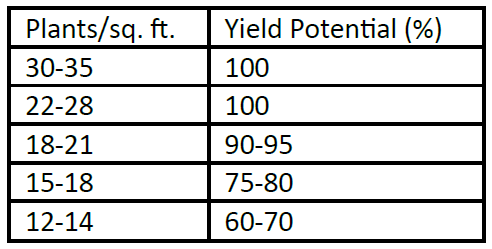
Andrew Kness, Agriculture Agent
University of Maryland Extension, Harford County
The 2018 growing season was a record year in terms of precipitation and is one we would all like to soon forget. However, a soggy fall made it very difficult to seed the 2019 wheat crop and may have lingering effects. Persistent rains delayed planting or forced growers to plant into less-than-ideal field conditions, which may have affected seed establishment and/or plant emergence. As wheat begins to green up and as we approach planting season, it may be a good idea to consider evaluating your wheat stands to help you determine if you should keep the crop for grain vs. a cover crop, consider alternate uses, or terminate it to replant a different crop.
In order to accurately determine wheat stand you will need a yard stick (or any three-foot long stick) and a calculator. Place the stick along a row and count the number of plants in that three-foot section. Record this number and repeat this several times at random locations across the field that are representative of the field as a whole. I would recommend doing this at 15-20 locations to get an accurate average. Take your average and multiply it by four. Divide this number by your row width (in inches). The equation looks like this:

Example:
Plants/ 3 ft. of row: (48+41+38+36+28+51+42+39+48+43+18+29+56+49+45)/15 = 40.7

Alternatively, if your wheat is broadcast or flown on, you can calculate the number of plants per square foot by counting the number of plants in a 1 ft. x 1 ft. square or any other standardized form of measurement as long as you’re consistent (for example, you could use a hula hoop; just calculate it’s area).
To achieve maximum yield potential, stands should be at least 22 plants/sq. ft. You may want to consider alternatives for stands fewer than 12-14 plants per square foot.

*information from the Penn State Agronomy Guide
